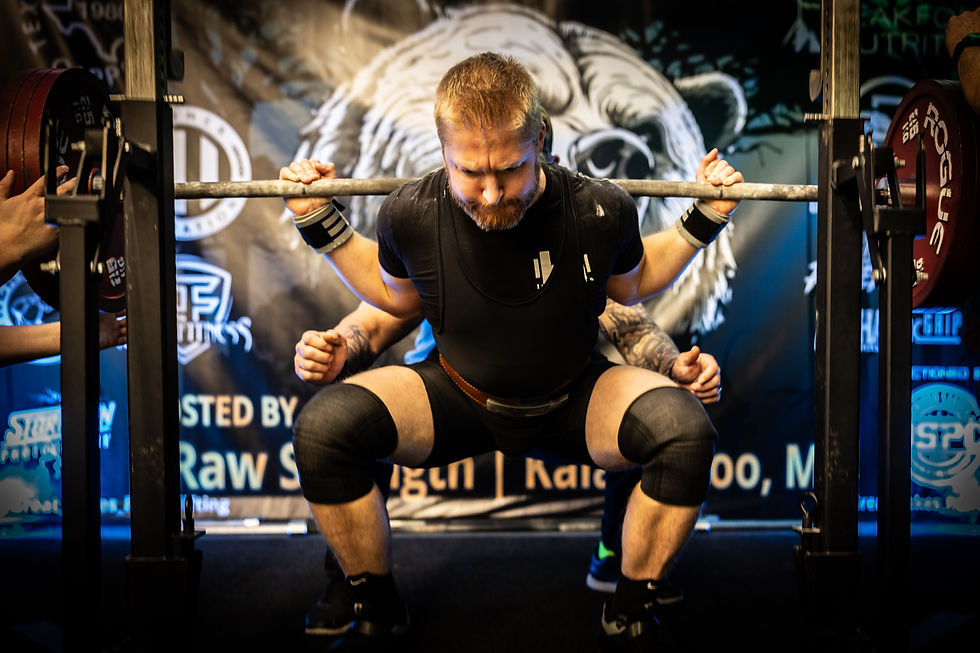Master the Squat: Top 5 Cues
- Jordan Van Dyk

- Mar 27, 2024
- 2 min read
The master cues of the squat- the KING of all muscle building exercises!
How do you perform the best squat possible? Try these cues!
"Midfoot" Often referred to as the "master cue" for a variety of lifts, staying balanced over the middle of your foot is good practice for life. It's especially important in the Squat, as carrying a loaded barbell on your back is a balancing act between all planes of direction. Staying on balance over the midfoot means adhering to a straight vertical bar path and creating a very efficient Squat that has maximum stability which thus allows the highest force production - and more gains.
"Knees out" New lifters have a tendency to want to put their knees straight out in front of themselves when squatting. This is bad for all sorts of reasons. It reduces the use of the powerful muscles known as the adductors and abductors on either side of your hips. It also limits your range of motion, as the top of the thighs will prevent the descent of the ribs and the correct back angle to occur, stopping your squat high and limiting your range of motion. Third, knees straight forward causes hip impingements for many trainees. All of these problems are fixed when you shove your knees out.
"Hips back" Piggybacking off of cue no. 2 here, shoving your hips back is also important in relation to your knees. If the lifter is not mindful of pulling their hips back, they are going to place a great emphasis on the quads - which are very strong - but also putting immense pressure on the knees. The forces of the Squat are better off being carried by the hips, which are surrounded by several large muscle groups. Hoving your hips back, while your knees are out and you are on the midfoot, allows the weight to be moved by the hips and creates the proper back angle from which to Squat. which in turn allows more weight to be handled by the lifter.
"Chest Out" Not to be confused with "Chest Up" the "Chest Out" cue is as much about its antagonist muscles as it's agonists. To stick ones chest out, one must flex the muscles of the back, the lats must be tightened and the scapula (shoulder blades) must be retracted. This gives the lifter a solid surface on which to place the bar, maintain balance, and stay tight throughout the movement.
"Hip Drive" Drive your hips straight up. This is where the horsepower is in your body. Use the hips and all of their musculature to drive force directly perpendicular to the forces of gravity.















Comments